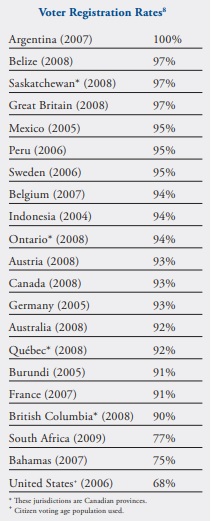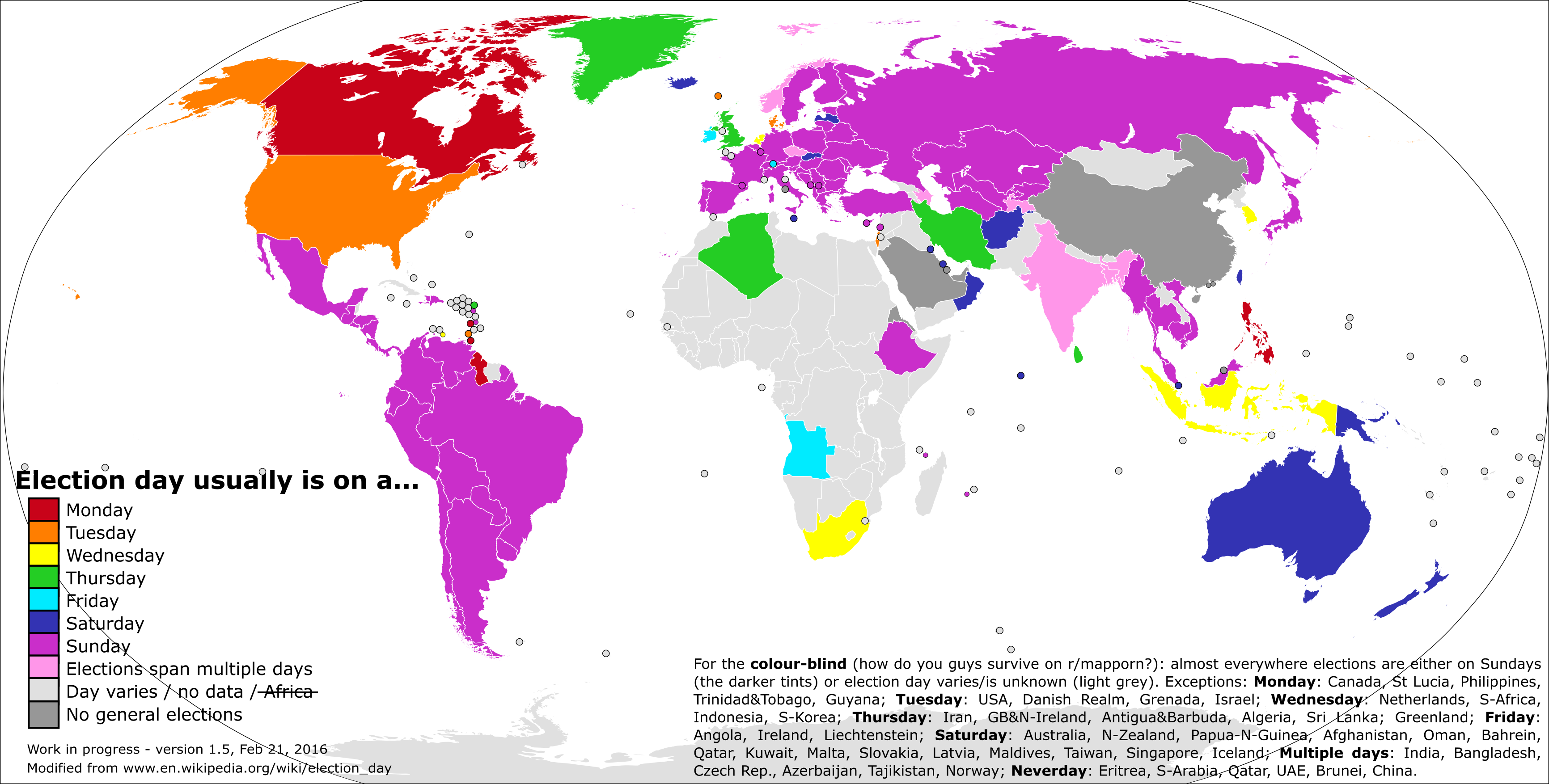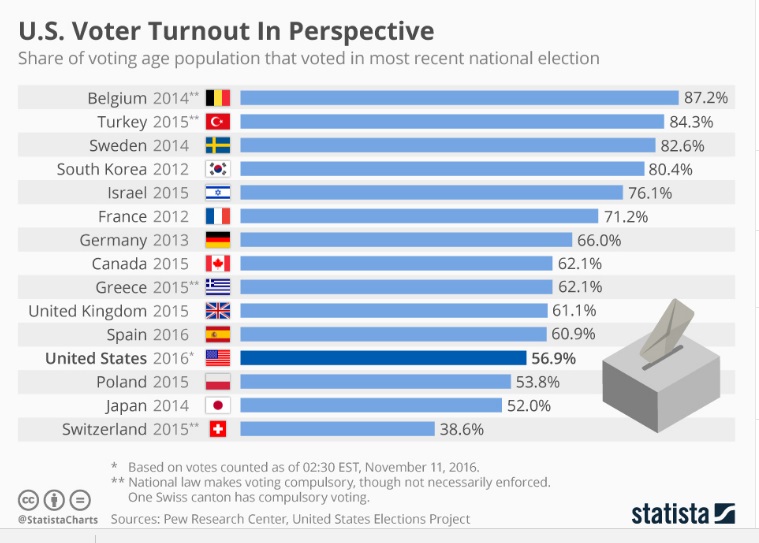
For the last two hundred years, America has boasted to the world about its democratic institutions. America is referred to as "the land of the free." But how much of a democracy is America really? First of all, it's not a literal democracy in the true sense of the word. It is a republic, a country that is governed by elected representatives.
But how much influence does the average American citizen have over who gets to become a representative and the types of policy they wield?
The 2016 presidential election was an example of how American citizens did not get to choose their president by popular vote. The most popular candidate, Hillary Clinton, did not win the election, even though she received an estimated 3 million more votes than Donald Trump. And the 2000 presidential election was also a case where the candidate who lost the popular vote, George W. Bush, still won the election through the electoral college.
So there are clearly issues facing America's democratic institutions. We will examine these below, as well as possible solutions.
LOW VOTER REGISTRATION
The United States is one of the few representative democracies that places the burden of registering to vote on individual citizens. Today, one-quarter to one-third of all eligible Americans remain unregistered to vote, and are unable to cast a ballot that will count. It would be much simpler, and much more democratic, if all American citizens were simply registered to vote at birth, like what is done in other countries.

(Source: Expanding Democracy: Voter Registration Around the World PDF)
SEVERE AMERICAN VOTING DIFFICULTIES

(Source: Brilliant Map)
Of the citizens who are registered to vote, only about half of them do so.
Part of the problem is that even for many people who want to vote, it is difficult. Election day is not a national holiday in the U.S. Other countries that have higher voter turnout have their elections on weekends and holidays. America is one of the few nations that doesn't vote on the weekend, as you can see on the map above.
There are also many other difficulties U.S. voters must face: long lines, malfunctioning outdated voting machines, confusion over voting restrictions, voter intimidation and voter registration problems.
LACK OF REPRESENTATION FOR THE PEOPLE LIVING IN THE NATION'S CAPITAL
For the 700,000 people who live as citizens in Washington D.C, they have no representation in Congress. While D.C. residents can vote in the presidential elections, as well as local elections for mayor and for city council, they do not have the same rights proportionate to the states with the ability to elect a representative in the Congress and Senate. Also, people in D.C. only get three electoral college votes, and are required to have less electoral votes than the least populous states, even though D.C. has more people than Wyoming and Vermont.
THE ELECTORAL COLLEGE
As one of the worlds oldest representative governments, the United States' voting system is mired with outdated policies, including the Electoral College. Even worse, the Electoral College is actually a vestige of slavery and racism. When the founders of the U.S. Constitution in 1787 considered whether America should let the people elect their president through a popular vote, James Madison said, “Negroes” in the South presented a “difficulty … of a serious nature.” During that same speech on Thursday, July 19, Madison instead proposed a prototype for the same Electoral College system the country uses today. Each state has a number of electoral votes roughly proportioned to population and the candidate who wins the majority of votes wins the election.
So because of the Electoral College, the presidential election is basically chosen by 538 electors.
THE TWO PARTY SYSTEM
Another large problem is America's two-party system. It is pretty much impossible in the United States for a third party to win a national election. In the 2016 presidential election, the Libertarian Party won just 3% of the vote and the Green Party received a measily 1%. In many other countries, there is an instant-runoff voting system, where instead of just voting for only a single candidate, voters can rank the candidates in order of preference, which allows for greater plurality in elections.
The problems facing third parties are compounded by restrictive ballot access laws and other barriers that the major parties have erected to protect their defacto monopoly.
LOW VOTER TURN OUT
Lastly, low voter turnout is another major issue. Only half of eligible voters even went out to vote in the 2016 presidential elections. (PBS). In fact, out of all the countries in the world with representative governments, the United States actually has one of the lowest voter turnout rates. For example, in lower house elections between 1960-1995, Australia had the highest voter turnout rate (95%) and the United States had the lowest (48%), putting it even below countries like Pakistan, Russia, Venezuela and Slovakia. (Statistics from Mark N. Franklin's "Electoral Participation", found in Controversies in Voting Behavior (2001). Includes only "free" elections).
And when it comes to national elections world wide, the U.S. also has one of the lowest voter turnout rates, finding itself near the bottom of the list, below countries like Belgium, Turkey, South Korea and Israel (Statista 2016).
So, considering all these different issues, we believe it is high time that the "land of the free" change its policies to give actual freedom and democracy a chance.

(Source: Statista 2016)
LINKS
Voting Problems Present in 2016, But Further Study Needed to Determine Impact (Brennan Center for Justice, 11-14-16)
American Democracy (the Lack Thereof) (Huffington Post, 8-26-10)
Why are other countries so much better at conducting elections than we are? (Slate, 10-17-08)
VOTER TURNOUT AND REGISTRATION
Expanding Democracy: Voter Registration Around the World Report PDF
U.S. trails most developed countries in voter turnout (Pew Research, 5-21-18)
Voter turnout at 20-year low in 2016 (CNN, 11-30-16)
Voter Turnout (Wikipedia)
ELECTORAL COLLEGE
What is the Electoral College? (U.S. Electoral College)
Is the Electoral College Doomed? (October 2017)
Time to End the Electoral College (The Electoral College, 12-19-16)
ELECTION DAYS
Make Election Day a National Holiday (New York Times, 11-7-16)
Should Election Day in the U.S. be a national holiday? (CBS News, 11-1-16)
The Case For A New National Holiday: Election Day (Good, 11-29-16)
What Day of The Week Elections Are Normally Held: Election Days By Country (Brilliant Maps, 2-23-16)
Sanders: Make Election Day a holiday (The Hill, 8-10-15)
VOTER REGISTRATION
Why Are Millions of Citizens Not Registered to Vote? (Pew Trusts, 6-21-17)
7 specific ways states made it harder for Americans to vote in 2016 (Vox, 11-7-16)
Getting a photo ID so you can vote is easy. Unless you’re poor, black, Latino or elderly (Washington Post, 5-23-16)
SOLUTIONS TO THE TWO PARTY SYSTEM
Instant-runoff voting (Wikipedia)
The two-party system is dying — let’s put it out of its misery (The Hill, 11-10-17)
Why Third Parties Can't Compete (Forbes, 5-14-10)